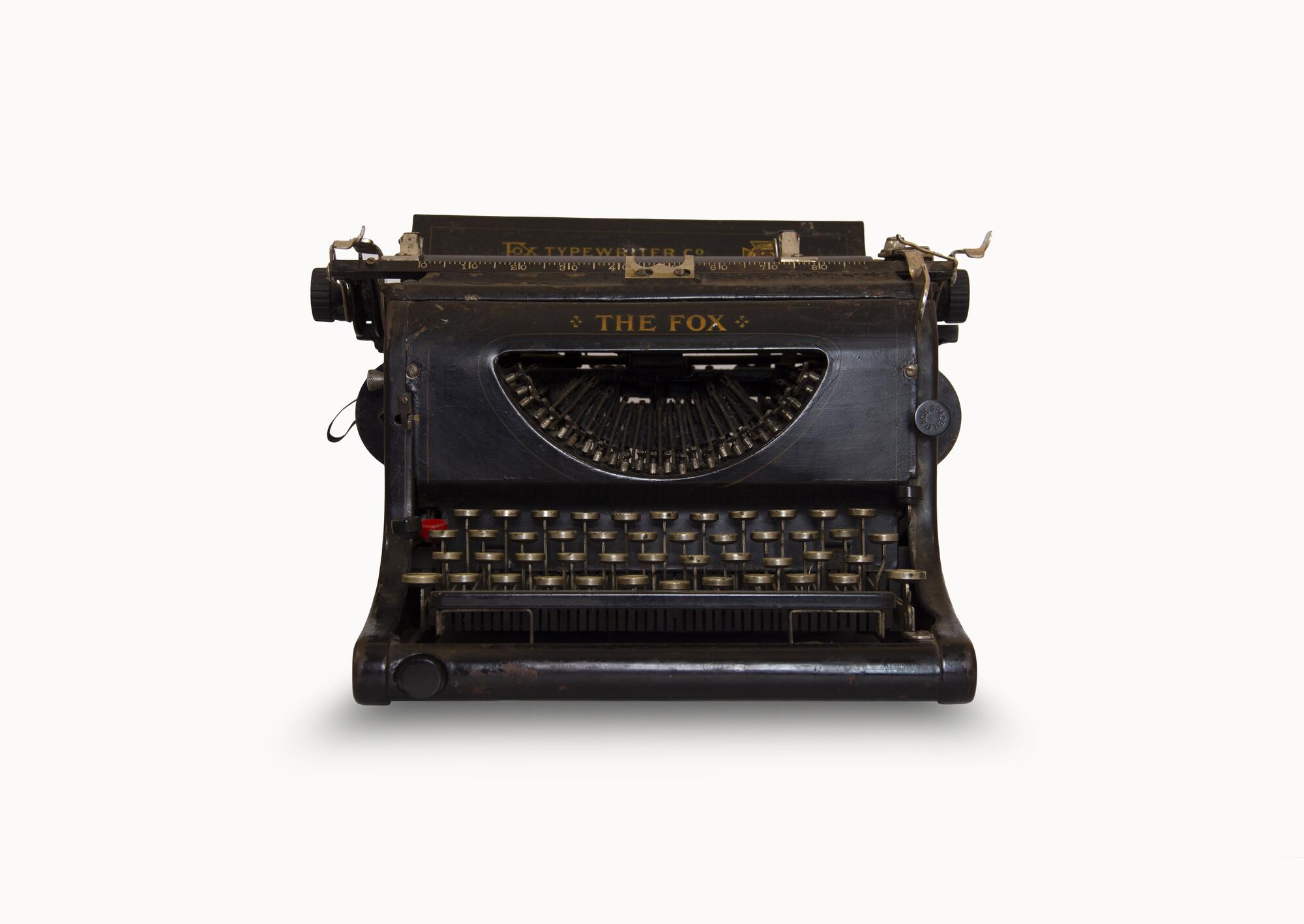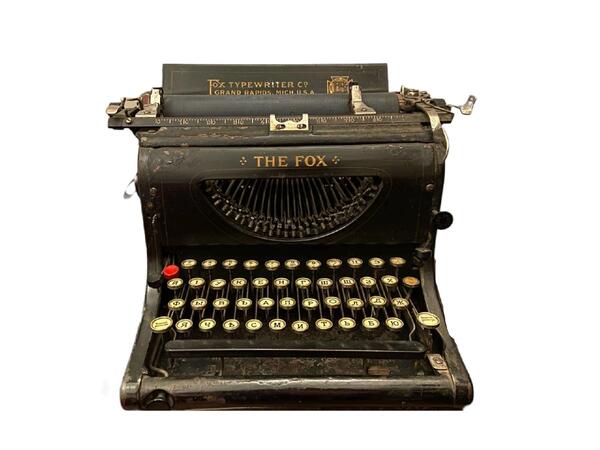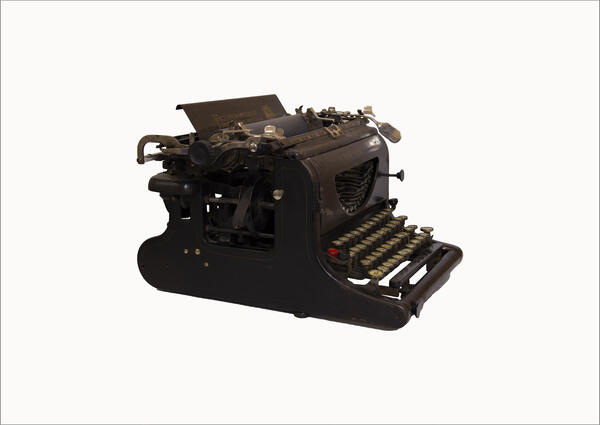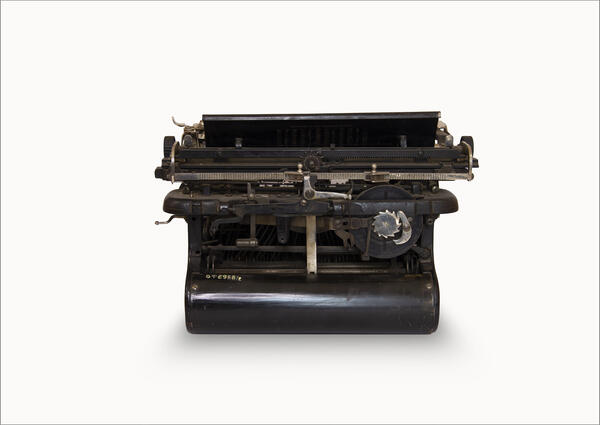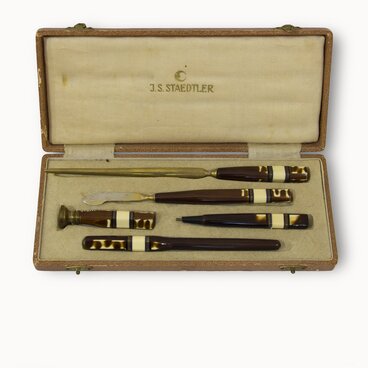The typewriter from the museum’s collection was made in Grand Rapids, Michigan, by the Fox Machine Company. The serial number — 117231— is stamped on the back of the machine. According to the company’s catalog, this machine was manufactured in 1920. It is the No. 23, which Fox introduced in 1906.
This model is a later version of Fox typewriters: the keytops have protective nickel rings and glass inserts which prevent the character legend rubbing off the keys. A back-space key and a tabulator were added to the latest machines during the last years of the company’s existence.
The typewriter was quite expensive — it cost about $ 100. Nevertheless, it was popular due to the quality of workmanship and the faster and easier operation of the machine due to its staggered typebar bearing arrangement and having type bars of two different lengths.
The Fox Machine Company was founded by American entrepreneur William Fox in 1885. Initially, its principal products were machines for the wood working industry. However, in 1898, after Mr. Fox met the engineer Glenn Barrett, the company began making typewriters. The first upstrike models produced by the company were “non-visible”, like the Remington No. 2 typewriter, and in 1906, the company introduced its first “visible” machine. Initially inventors were unable to create a typewriter that would enable the typist to see what was written while still typing. Later, this problem was solved, and it was the model No. 23 that became the first “visible” machine added to the line of the Fox company.
The company continued producing large stationery machines and launched its own portable typewriter that first left the assembly line in 1917. The company was never an industry leader. The hard times caused by World War I, the prolonged influenza epidemic and the economic crisis took their toll, and in 1922, the Fox Machine Company went bankrupt due to financial difficulties and litigation and stopped its business.
This model is a later version of Fox typewriters: the keytops have protective nickel rings and glass inserts which prevent the character legend rubbing off the keys. A back-space key and a tabulator were added to the latest machines during the last years of the company’s existence.
The typewriter was quite expensive — it cost about $ 100. Nevertheless, it was popular due to the quality of workmanship and the faster and easier operation of the machine due to its staggered typebar bearing arrangement and having type bars of two different lengths.
The Fox Machine Company was founded by American entrepreneur William Fox in 1885. Initially, its principal products were machines for the wood working industry. However, in 1898, after Mr. Fox met the engineer Glenn Barrett, the company began making typewriters. The first upstrike models produced by the company were “non-visible”, like the Remington No. 2 typewriter, and in 1906, the company introduced its first “visible” machine. Initially inventors were unable to create a typewriter that would enable the typist to see what was written while still typing. Later, this problem was solved, and it was the model No. 23 that became the first “visible” machine added to the line of the Fox company.
The company continued producing large stationery machines and launched its own portable typewriter that first left the assembly line in 1917. The company was never an industry leader. The hard times caused by World War I, the prolonged influenza epidemic and the economic crisis took their toll, and in 1922, the Fox Machine Company went bankrupt due to financial difficulties and litigation and stopped its business.
